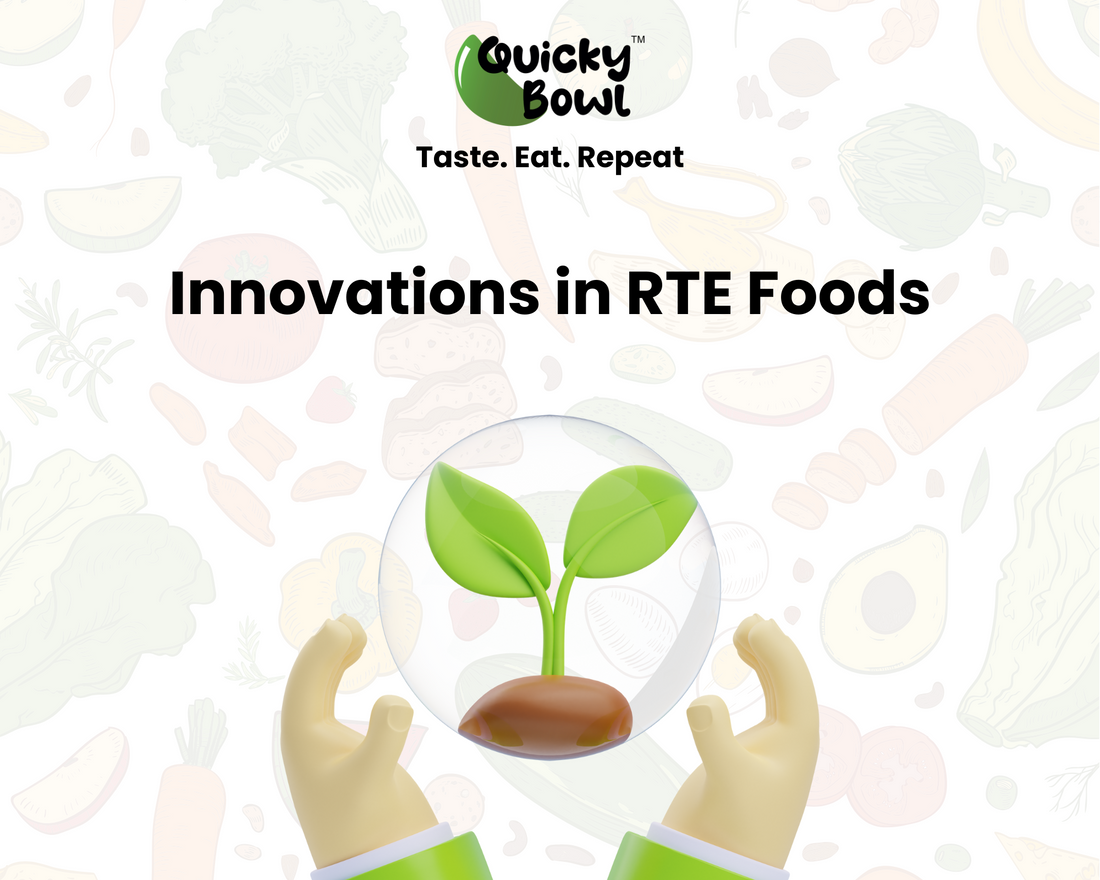The ready to eat (RTE) food industry has seen remarkable growth in recent years, driven by evolving consumer demands and technological advancements. As we step into 2025, RTE foods are no longer just about convenience, they’re about sustainability, health, and innovation. Let’s dive into the latest trends shaping the future of this dynamic industry.
1. Plant Based and Vegan Options
With the rise of conscious eating, plant based RTE meals are becoming mainstream. In 2025, expect to see a surge in:
Protein Packed Alternatives: Lentils, Tapioca Pearls, quinoa, and jackfruit taking center stage.
Global Flavors: Vegan curries, tacos, and sushi bowls delivering authentic taste.
Dairy Free Innovations: Cheese and yogurt substitutes crafted for RTE meal kits.
2. Functional Foods for Wellness
Consumers now seek meals that nourish both the body and mind. RTE brands are incorporating functional ingredients like:
Adaptogens: Ingredients like ashwagandha and turmeric for stress relief.
Probiotics: Fermented options like kimchi rice bowls or gut friendly soups.
Superfoods: Chia seeds, spirulina, and moringa for added nutrients.
3. Technology Driven Packaging
Sustainability is a major focus in 2025, and packaging innovations are leading the charge:
Biodegradable Materials: Edible and compostable packaging is reducing environmental impact.
Smart Packaging: QR codes that provide ingredient sourcing, cooking tips, and freshness updates.
Reusable Containers: Encouraging a circular economy for eco-conscious consumers.
4. Regional Flavors with a Twist
Globalization meets local flavors in 2025. RTE meals are showcasing traditional cuisines with a modern spin:
Fusion Foods: Think paneer masala tacos or masala quinoa bowls.
Nostalgic Comfort: RTE versions of home cooked classics like dal makhani or khichdi.
Ethnic Exploration: Diverse options from African, Middle Eastern, and Southeast Asian cuisines.
5. Ready to Eat Meal Kits
Meal kits that combine convenience with a DIY feel are a big hit:
Customizable Kits: Allowing consumers to add their own ingredients or adjust spice levels.
Pre-Cooked Components: Simplifying complex recipes with pre-prepped items like sauces and marinades.
Themed Kits: Seasonal or occasion specific meal boxes, like festive feasts or romantic dinners.
6. AI-Powered Personalization
Artificial Intelligence is revolutionizing RTE food production by tailoring meals to consumer preferences:
Diet-Specific Menus: Keto, paleo, or gluten free options curated based on user data.
Flavor Customization: AI predicting and adjusting spice, sweetness, or tang levels.
On-Demand Freshness: Subscription services delivering RTE meals personalized for daily needs.
7. Enhanced Shelf Life with Clean Labels
Advancements in food preservation now ensure longer shelf life without compromising on quality or health:
Natural Preservatives: Use of herbs, vinegar, and salt for freshness.
Freeze Drying Technology: Retaining nutrients while offering instant preparation.
Minimal Processing: Maintaining a "clean label" with no artificial additives.
8. High-Protein and Low-Calorie Meals
With fitness enthusiasts in mind, high-protein, low-calorie RTE options are booming:
Protein-Packed Breakfasts: Fried Eggplants, Chickpea Salads, Greek yogurt parfaits.
Snackable Proteins: RTE roasted chickpeas, protein bars, and energy balls.
Post-Workout Meals: Balanced meals for recovery, like grilled Tofu and quinoa bowls.
9. Global Appeal of Single-Serve Portions
As nuclear families and solo living increase, single-serve RTE meals are trending:
Microwave-Ready Bowls: Compact, portioned meals for easy dining.
Snack-Sized Packs: For quick hunger fixes during work or travel.
Premium Single-Serve: Gourmet-style dishes for indulgent solo moments.
10. Sustainability at the Core
Sustainability is no longer a choice but a necessity in 2025. The RTE industry is prioritizing:
Locally Sourced Ingredients: Reducing carbon footprints while supporting local farmers.
Zero Waste Practices: Using food scraps for broths, sauces, or compost.
Carbon Neutral Operations: Brands like Quicky Bowl is committing to eco-friendly practical methods.
The Future of RTE Foods
The RTE food industry in 2025 is more than just a solution for busy lifestyles—it’s a statement of innovation, sustainability, and inclusivity. With healthier choices, diverse flavors, and cutting edge technology, ready to eat foods are shaping a future where convenience and conscience coexist seamlessly.
Whether you’re a busy professional, a fitness enthusiast, or an adventurous foodie, Quicky Bowl RTE Food has something exciting on your plate.










